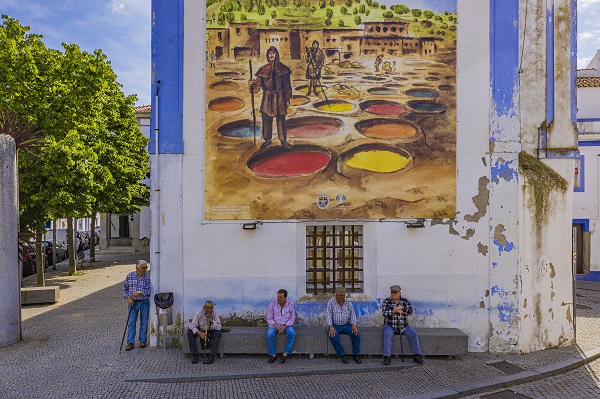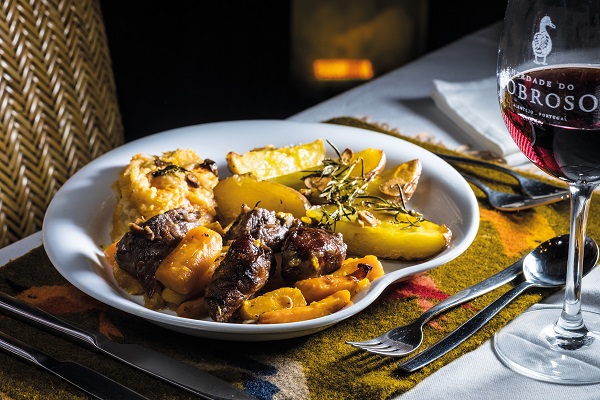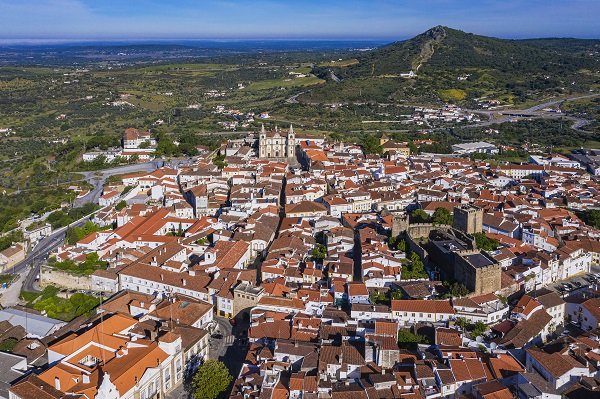When you think about a trip to Portugal, you have a lot of questions to answer first. As in: if I am going to go through the expense and hassle of travel — what do I want to do? Certainly, the way and reasons we travel have changed — so planning a trip has changed too.
Tourism can change a place — and not always for the worst. Huge boosts of travel helped to revitalize whole neighborhoods in Porto and Lisbon, bringing jobs and new businesses. But they also erased a bit of the character that made them so special.
I often read travelers’ posts on planning a trip from Lisbon to Porto, or the Algarve. Aiming at where the Instagrammers have been. But, if you just went to London or New York - would you get a true impression of a place, a people or a culture? Would you come to understand the soul of a nation or a people? Portugal is a complex place, one with centuries of history and a way of being that the guidebooks often miss. Despite the recent boost in interest in Portugal, the food, wines, history and sociology of the place often are lost on most visitors. And, for those who want to see the real Portugal, here are some hints for a trip that will be well worth the effort.
The People

Portugal is the closest destination to the US in mainland Europe, easy to get to and to navigate. Blessed with a mild climate year-round, an excellent range of sports awaits the active traveler. Every corner of the country is rich with historical attractions. It is one of Europe's best values — prices compare favorably with other European destinations. And, rain is rare in the summer, as the sun fills the sky.
Portuguese people remain very traditional. They are exceptionally welcoming to the visitor, but they hold on to their ways. This seems a contradiction, in a country whose recent past is so full of changes. In 1974 a military uprising ended decades of dictatorship, and the once conservative nation made a sharp move to the left. The nation opened up to the world, and let go of the bitter legacy of its colonial past. By 1986 Portugal had joined the European Union, bringing new levels of infrastructure to a place that had struggled with poverty and poor public education. What followed was a bumpy ride into the 21st century as Portugal modernized, but still clung to its traditions. So much changed, and somethings just remained as they were.
The Places
Portugal occupies the southernmost tip of Europe. Washed by the Atlantic Ocean and bordered by Spain, Lisbon is the western-most capital city in all continental Europe. The Portuguese Mainland is made up of five distinct regions, joined by two groups of Atlantic Islands. Portugal is Europe, but in many ways it is unique. Cut off from the rest of the continent by Spain, Portugal looked out at the Atlantic. As a result, Portuguese cuisine has influences from Africa, Brazil and Asia. The style of towns and monuments is different as well. The Southern Alentejo province, for example, is rich in Arab building influence, based on the 500 years that North Africans ruled. The food here has Arab influence, too, including the predominance of coriander and dried fruits.
In terms of building style, low white washed houses with tall thick chimneys are common in the South. The unique Portuguese style of Manueline is a celebration of navigation and the sea, and is only found in Portugal.
The Food and Wine


Like other major European cultures, Portugal’s food is not frozen in time and place — it is growing, evolving and embracing the best of 800+ years of flavors, with new thinking.
Historically, one of the staples of Portuguese meals is bacalhau-- dried, salted codfish eaten throughout Portugal. In fact, they say that there are 365 different ways to make cod, one for each day of the year. But those ways vary north to south, east to west. In the North, visitors will find rich dark "broa" bread which is also common across the North, adding richness and complexity to even the simplest meal. The Northeast corner of the country is famous for its smoked hams, called "presunto," and for delectable handmade sausages. The wide-open Alentejo Region and the coastal Algarve Regions each have their own distinct way of cooking. Bread crumbs, or migas, rich sausages and dark hams are popular in Alentejo. The Algarve also specializes in spicy, grilled seafood. And, marinated carrots are a popular starter.
Speaking of the Alentejo, it is now a world wine region. In recent years, the region’s winemakers have ushered in many of the modern advancements, earning acclaim for some full-bodied, fruity reds and light, oaky whites. The rolling plains are covered with large wine fields, dotted with whitewashed homes and cork trees. Both the wines and cuisine of the Alentejo have been influenced by Greek, Roman and Arab visitors. These cultures brought their traditional cuisines to the Alentejo and today many local dishes are based on Mediterranean ingredients. The Alentejo climate of hot summers and cool winters helps create flavorful grapes that transform into ripe and complex wines.
Today, traditional Portuguese grape varieties are the rule. Modern winemakers have introduced international varieties too, such as Syrah and Cabernet Sauvignon into their local blends.
The Alentejo was not always known for white wines, but new tech and grapes have helped bring some great whites to the market.
How to take it All in
To many Portuguese - the Alentejo is a country all its own. The distinct dialect, unique countryside and flora, the local slower pace of life is far from the norm. Certainly this has confounded many travel writers who seek common denominators as they try to boil the place down to its essence. If you want to see and breathe in a unique place, this is it. And, it has evolved in a way that getting about and exploring is much easier — but the essence is still the same. The rest of the Alentejo is spread out — and often towns are miles from each other, and the areas between are connected by cork forests, olive groves and patches of big round top pines.
The hill
and plains of the Alentejo can appear purple at sunset, and the cork forests,
fields of sunflowers and olives, are only occasionally punctuated by fortified
hill towns. Moors, Romans, Carthaginians and other great civilizations have been drawn to its natural beauty. Évora, the center of the Alentejo could be called a living museum. But, despite its Roman temple, Gothic cathedral, and ancient ramparts, Évora is a thriving place for life, commerce, palatial hotels and a cuisine as rich as its past. One of Portugal’s hidden treasures, is a wild and historic region that combines grand Roman and Moorish ruins, with medieval towns, whitewashed villages and baroque cities (such as Évora and Portalegre) with some of the most evocative natural scenery in Europe. Alentejo Atlantic coastline combines rocky coves and cliffs with some of Europe’s most sandy and undeveloped beaches.
But the wonder of this region is a slow discovery. The pace of life is slower, the people are very welcoming and kind. And there are all kinds of surprises. For example, you could drive for 40 minutes in the Northeastern corner of the Alentejo and see nothing but cork forests and a clear blue sky. Then, the road leads to Portalegre, a bustling little city, full of life and movement.
How is it that in this sparsely populated corner of the world, such a historic and thriving city exists? And, how is it that with its many shops, eateries, parks, cafes and soaring historic center, complete with castle and cathedral, Portalegre somehow gets left out of some guidebooks? That is a shame, as the city has more than enough crafts, wines, scenery, and monuments to fill days of exploring.
How is it that in this sparsely populated corner of the world, such a historic and thriving city exists? And, how is it that with its many shops, eateries, parks, cafes and soaring historic center, complete with castle and cathedral, Portalegre somehow gets left out of some guidebooks? That is a shame, as the city has more than enough crafts, wines, scenery, and monuments to fill days of exploring.



